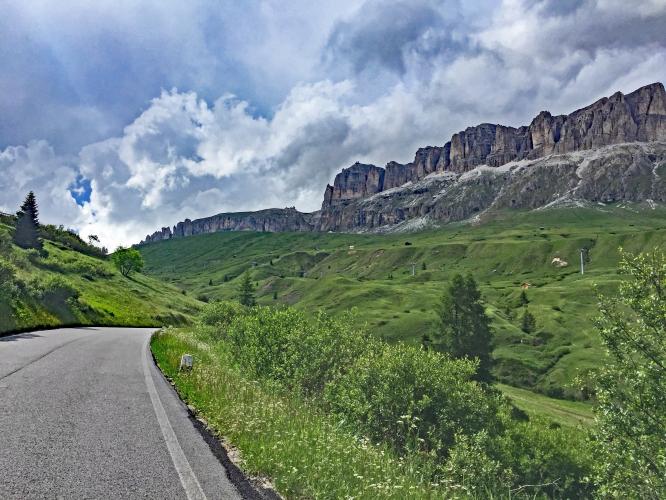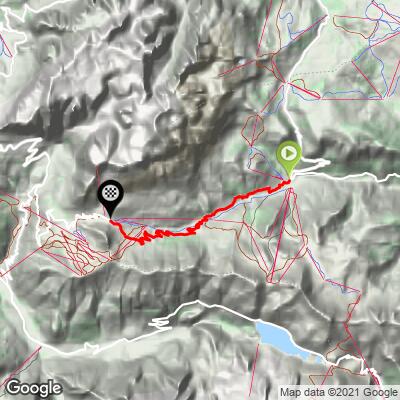Climb Summary
The 2 routes up to Passo Pordio come close, but come a tad short, from rivaling the incomparable Giau in beauty. Along with Passo Giau, Passo Pordio is a bucklet list-travel-from-California-worthy climb.
What Pordio lacks due to relatively mild difficulty, it makes up in dramatic rock formations and beauty.
![IMG_1625.JPG]()
![IMG_1992.JPG]()
The approach from Canazei (south) is a manageable 7.3 miles, 2,435’ at 6.3% average grade as is the approach from Arabba (north) at 5.6 miles, 2,020’ and 6.8%. The steepest ¼ mile from the north is 7.8% and from the south 7.6%. But, again, and with sincerity and love of this climb, we state - come for the climb, stay for the views!! Even though we were here on a dreary day, we saw enough to know that not only to we want to come back, we want to live here!!
![IMG_1433.JPG]()
Canezei start (south side)
![IMG_1690.JPG]()
![IMG_1719.JPG]()
![IMG_2045.JPG]()
![IMG_2094.JPG]()
![IMG_2222.JPG]()
![IMG_2224.JPG]()
Passo Pordoi has been included in many Giro d’Italia’s since its first appearance in 1940. It has been the Cima Coppi (highest point of the Giro) 13 times, more than any other pass in Giro history (Stelvio is second highest at 9[1]. Cima Coppi:
“The Cima Coppi is the title given to the highest peak in the yearly running of the Giro d'Italia, one of cycling's Grand Tour races. The mountain that is given this title each year awards more mountains classification points to the first rider than any of the other categorized mountains in the race.
The categorization was first introduced for the 1965 Giro d'Italia in honor of the late Fausto Coppi who won five editions of the Giro d'Italia and three mountain classification titles during his career. It was first announced on 22 April 1965 by then race director Vicenzo Torriani that the highest peak would award two times as many mountains classification points. Torriani thought of possibly awarding time bonuses to the first to summit the mountain; however, after many dissenting opinions, he opted to go award more mountains classification points.
The Cima Coppi changes from year to year, depending on the altitude profile of the Giro d'Italia, but the Cima Coppi par excellence is the Stelvio Pass, which at 2758 m is the highest point ever reached by the Giro. The Stelvio has been used in the 1972, 1975, 1980, 1994, 2005, 2012, 2014 and 2017 editions. It was also scheduled in 1965, 1988, and 2013, but in each case the course was modified due to weather conditions, with various effects on the Cima Coppi designation.” Wikipedia - Cima Coppi
[1] Note - if Stelvio is included in a stage, it will necessarily be the Cima Coppi because it is the highest pass available to the Giro.

 We've partnered with Sherpa-Map.com to bring you the best route planning tool. With a PRO Membership you can use this climb as a reference when creating your route.
We've partnered with Sherpa-Map.com to bring you the best route planning tool. With a PRO Membership you can use this climb as a reference when creating your route. 

